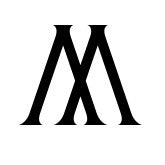Fashion Through The Decades: 3 Iconic Styles For Women
To know people is to know their fashion. Looking at fashion and how it has changed and unfolded will give you a glimpse into humanity. Let’s look at three iconic fashion statements made by women throughout history.
1900’s:
Based off of the previous century, fashion stayed stagnant during this time. The loose and simple clothing that would come to define this century did so late in the decade if not into the roaring ’20s. For most of the decade, the elegant silhouette maintained the powerful S-shape designed by a new “health” corset. These corsets shoved the bust forward and forced the hips back in an attempt to circumvent stress on the abdomen. The shape highlighted a slender waist and an ample “mono-bosom.”
Tops were reminiscent of a blouse and were loose-fitting, the excess fabric helping to maintain this top-heavy frame. The sleeves also had a dramatic flair to them, accentuated by petticoats with full-backs and soft fronts.
Compared to the oncoming decades, women’s fashion remained modest. Day dresses covered women from head to toe, skin being hidden during the conservative times. Dresses were made of fabrics such as lace, silk, and Irish crochet for those not as wealthy.
1920’s:
During the 1920’s we begin to see a change in fashion. “Twenties fashion is often remembered for its glitz and glamour, though underlying this was a move toward simplicity in dress. For women, this meant shorter skirts and simple shapes.”
This rough period lies between two world wars, pushing society and its trifles to lead the way for a fashion make-over. The opposition, ending just over a year before the new decade began, had a significant and resolute impact on society, culture, and fashion.
The style for women became more simplistic and free. Instead of being covered from head to toe in fabric, the ’20s brought in a more rebellious mindset allowing women to bare more skin. Besides royalty wives of industrialists, American entrepreneurs, and film stars began to dominate the fashion industry. Women began to get more privileges and independence during this decade. They earned the right to vote and even entered the workforce to help out with their household wages.
Women began to set the bar for a new style, a more androgynous one. They cut their hair in the shape of bobs instead of wearing the usual long hair. They donned a more masculine, flat-chested look abandoning the extravagant dresses. Their dresses were shorter and loose instead of the previous decorative long trains. Instead of the usual corset, women were able to reveal a more natural straight silhouette.
1940’s:
“France, the United Kingdom, and the United States all had distinguished fashion stories during the first half of the 1940s due to the impact of the war.” After World War II fashion went through a complete makeover, likely parallel to the distraught state of society. Mass production and ready to wear clothes became accessible and popular. With a more convenient route of making clothes along with accessibility and affordability, society shifted from hand-made clothing to mass-produced clothing. Because of the war, society became bankrupt, disrupting household pockets, and family lives. It was practical and more affordable to shift from handmade to mass-produced clothing. The common woman was made to embrace factory-made clothes.
During this period, polyester and nylon were discovered, leaving room for a bolder look. This innovative discovery replaced silk allowing for the accessibility of cheaper clothing for the women suffering from the effects of the war. Leggings became popular as access to nylon was prevalent.
The well-known designer Christian Dior was the front-runner for fashion during this time. His first collection appearing in 1947, paved the way for fashion in the next decade.
Let us know what your favorite fashion era is!

